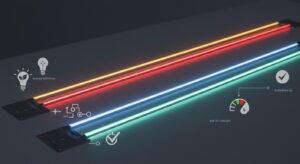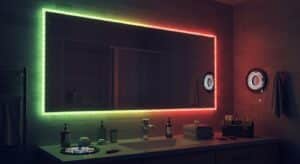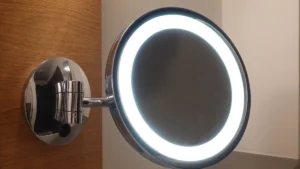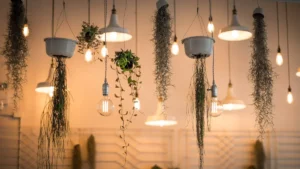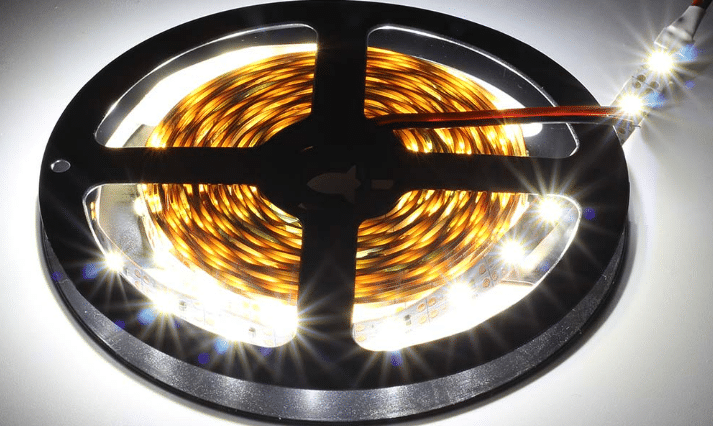
Choosing between 5V and 12V LED strips depends on your project’s size and complexity. For small DIY setups, 5V LED strips are safer and easier to handle. They’re perfect for short installations like PC cabinets or art displays. On the other hand, 12V LED strips shine in larger spaces, offering consistent brightness over longer distances. Matching the voltage to your project ensures optimal performance and safety.
Key Takeaways
Pick 5V LED strips for smaller projects. They are simple to set up and great for short spaces, like desk lights or computer cases.
Use 12V LED strips for bigger setups. They stay bright over longer areas, making them good for kitchen cabinets or room decorations.
Think about voltage drop when planning. 5V strips might get dim over long spaces, but 12V strips keep the light even better.
Voltage and Voltage Drop in 5V and 12V LED Strips
Understanding Voltage in LED Strips
Voltage plays a big role in how your LED strips perform. It determines how much power flows through the strip and directly impacts brightness, color consistency, and lifespan. When the voltage is too low, you’ll notice dimmer lights and uneven colors. This happens because LEDs perform best at their rated voltage. If the voltage drops too much, the current increases to compensate, which can stress the LEDs and shorten their lifespan. For longer installations, voltage drop becomes a bigger concern, especially if you want consistent brightness across the entire strip.
Voltage Drop in 5V LED Strips
With 5V LED strips, voltage drop is more noticeable over longer distances. The lower voltage means the power weakens faster as it travels along the strip. This can lead to dimmer lights and uneven illumination, especially at the far end. You might also see color inconsistencies, where some LEDs appear brighter or have slightly different hues. To avoid this, you’ll need to keep the strip length short or add power injection points. Without these precautions, the increased current flow can cause overheating and even damage the LEDs.
Voltage Drop in 12V LED Strips
12V LED strips handle voltage drop better than their 5V counterparts. The higher voltage allows the power to travel farther before it starts to weaken. This makes 12V strips a better choice for longer installations, like under-cabinet lighting or room accents. However, voltage drop can still occur if the strip is too long or the power supply isn’t strong enough. You might notice reduced brightness or slight color inconsistencies at the far end. To maintain performance, you can use shorter strips or connect additional power supplies.
Energy Efficiency in 5V and 12V LED Strips
Power Consumption of 5V LED Strips
When it comes to power consumption, 5V LED strips are a great choice for smaller projects. They consume less power overall, making them ideal for applications like accent lighting or decorative setups. For example, a typical 5V LED strip draws 3.6 amps and uses 18 watts of power. This lower power requirement means you can use smaller power supplies, which can save you money upfront. However, keep in mind that 5V strips are better suited for shorter distances due to their higher voltage drop.
Power Consumption of 12V LED Strips
If you’re working on a larger project, 12V LED strips might be the better option. These strips consume more power but deliver consistent brightness over longer distances. A standard 12V LED strip also draws 3.6 amps but uses 43.2 watts of power. While this might seem like a drawback, the higher power allows the strip to maintain performance across extended lengths. This makes 12V strips a reliable choice for under-cabinet lighting, room accents, or outdoor installations.
Voltage | Current (A) | Power (W) |
|---|---|---|
5V | 3.6 | 18 |
12V | 3.6 | 43.2 |
Heat Dissipation in 5V vs. 12V LED Strips
Heat dissipation plays a big role in energy efficiency and the lifespan of your LED strips. 12V LED strips excel in this area. They operate cooler, even over long distances, thanks to their superior heat dissipation. This not only improves energy efficiency but also helps maintain consistent performance and brightness. On the other hand, 5V LED strips can struggle with heat buildup, especially if you push them beyond their recommended length. For smaller setups, this isn’t a major issue, but for larger installations, 12V strips are the clear winner.
Tip: If you’re planning a long installation, go with 12V LED strips to avoid overheating and ensure a longer lifespan.
Brightness and Performance in LED Strip Comparison
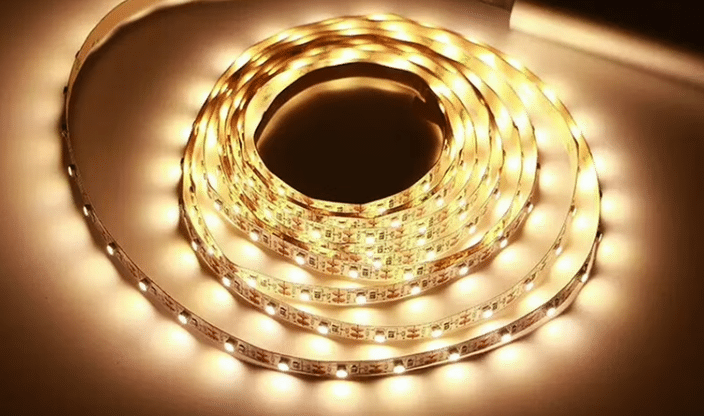
Brightness Levels in 5V LED Strips
When it comes to brightness, 5V LED strips are all about precision. These strips are perfect for projects where you need detailed control over individual LEDs, like creating intricate lighting effects or animations. The brightness of a 5V LED strip depends on several factors:
The density of LED pixels along the strip
The light output and efficiency of each LED emitter
The number of LEDs per foot
The power draw of the strip per foot
If you’re working on a small-scale project, like lighting up a display case or adding flair to your gaming setup, 5V LED strips deliver excellent performance. However, keep in mind that their brightness may diminish over longer distances due to voltage drop.
Brightness Levels in 12V LED Strips
For larger installations, 12V LED strips are the go-to option. They maintain consistent brightness across longer lengths, making them ideal for under-cabinet lighting or room accents. Just like 5V strips, their brightness depends on factors like:
The light output and efficiency of each LED emitter
The number of LEDs per foot
The power draw per foot (a good strip should use at least 4 watts per foot)
Additionally, higher LED density in 12V strips ensures more even lighting, reducing hotspots and dark spots. This makes them a great choice for creating smooth, professional-looking illumination in bigger spaces.
Light Consistency Over Distance
One of the biggest differences between 5V and 12V LED strips is how they handle light consistency over distance. 12V LED strips excel in this area. They can sustain brightness over extended lengths, effectively minimizing the effects of voltage drop. This makes them more efficient for larger projects where you need uniform lighting.
On the other hand, 5V LED strips are better suited for shorter distances. They provide consistent and vibrant illumination in small spaces but may struggle to maintain performance if stretched too far. If your project involves long runs of LED strips, 12V is the better choice for both brightness and efficiency.
Pro Tip: For long installations, consider using 12V LED strips to avoid uneven lighting and ensure optimal performance and brightness.
Installation and Safety of 5V and 12V LED Strips
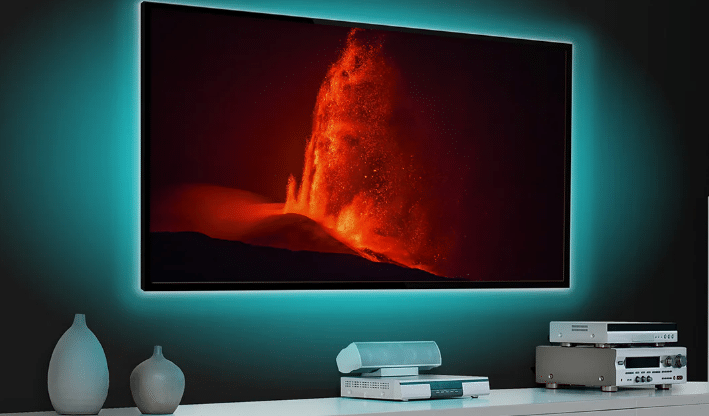
Installation Complexity of 5V LED Strips
If you’re tackling a small-scale project, 5V LED strips are a breeze to install. Their lower voltage and power input make them perfect for DIY setups like accent lighting or decorating your desk. You don’t need to worry about complex wiring or heavy-duty power supplies. Just connect the strip to a compatible LED strip power supply, and you’re good to go. These strips are lightweight and flexible, so you can easily fit them into tight spaces or around corners. However, keep the strip length short to avoid voltage drop and ensure consistent brightness.
Installation Complexity of 12V LED Strips
For larger installations, 12V LED strips require a bit more planning. These strips are designed for extended lengths, so you’ll need to consider the power supply compatibility carefully. A strong LED strip power supply is essential to maintain performance over longer distances. You might also need to use connectors or additional power injection points to prevent voltage drop. While the setup process is more involved, the payoff is worth it. 12V LED strips provide consistent brightness and are ideal for under-cabinet lighting or room accents. With proper installation tips, you can achieve professional-looking results.
Safety Considerations for 5V and 12V LED Strips
Safety should always come first when working with LED strip lights. Here are some key tips to keep in mind:
Choose LED strips with proper safety certifications for indoor use.
Follow the manufacturer’s instructions to avoid overcrowding and ensure ventilation.
Keep the strips away from flammable materials and allow unobstructed airflow.
Use surge protectors to prevent electrical hazards.
Protect power connections from moisture, as they’re not waterproof.
Only cut strips at designated cut lines to avoid damage.
Monitor connection distances to prevent overheating.
Regularly inspect for wear or damage to ensure long-term safety.
Both 5V and 12V LED strips can encounter common issues like overheating, voltage drop, or hot spots. Poor-quality products or improper installation can increase these risks. By following these safety measures, you can enjoy efficient and reliable LED strip lighting for years to come.
Cost Analysis of 5V and 12V LED Strips
Initial Costs of 5V vs. 12V LED Strips
When starting a project, you’ll notice that 5V LED strips are usually more affordable. Their lower voltage requirements mean you can use smaller power supplies and simpler setups, which keeps costs down. This makes them a great choice for smaller projects like accent lighting or decorative displays.
On the other hand, 12V LED strips might seem pricier upfront. They often require a more robust LED strip power supply and additional components for longer installations. However, this initial investment pays off if you’re working on larger projects. Their ability to cover more area effectively can save you money in the long run by reducing the number of strips and power supplies needed.
Long-Term Costs and Energy Savings
While 5V strips are budget-friendly at the start, 12V LED strips often win in the long-term cost game. Their higher voltage allows them to maintain brightness over longer distances, which means fewer strips and power supplies are required. This translates to better energy efficiency and lower electricity bills for larger installations.
For smaller-scale projects, 5V strips still make sense. Their lower power requirements mean you’ll spend less on electricity and installation. But if you’re lighting up a big space, 12V strips are the smarter choice. They offer better energy efficiency and can save you money over time, especially in commercial or outdoor settings.
Maintenance Costs for 5V and 12V LED Strips
Maintenance costs depend on how well your LED strip lighting performs over time. 5V LED strips may require more frequent attention in larger setups due to voltage drop and potential overheating. You might need to replace sections or add power injection points to maintain performance.
In contrast, 12V LED strips are more reliable for extended installations. Their ability to handle longer distances with consistent brightness reduces the need for frequent adjustments or replacements. This makes them a cost-effective option for projects where durability and low maintenance are priorities.
Tip: To minimize maintenance costs, follow proper installation tips and choose high-quality LED strips with good safety certifications.
Durability and Lifespan of 5V and 12V LED Strips
Lifespan of 5V LED Strips
The lifespan of a 5V LED strip typically ranges from 50,000 to 100,000 hours. However, several factors can influence how long it lasts. Here’s what you need to know:
Usage patterns: Continuous use can increase thermal stress, which reduces the lifespan.
Voltage sensitivity: High voltage can overheat the LEDs, leading to premature failure.
Heat management: Poor heat dissipation can cause overheating, lowering efficiency and durability.
To get the most out of your 5V LED strip, focus on proper heat management and avoid overloading the strip with excessive voltage. These steps can help extend its lifespan and ensure consistent performance.
Lifespan of 12V LED Strips
A 12V LED strip also boasts an impressive lifespan of 50,000 to 100,000 hours. Its longevity depends on factors like voltage, wattage, and temperature. Continuous long-term use can increase thermal stress, while frequent on/off cycling may also shorten its life. Poor heat management, often caused by low-quality components or improper power supplies, can lead to overheating and reduced efficiency.
Interestingly, 12V LED strips handle voltage drops better than 5V strips. This makes them more reliable for longer installations, as dimming caused by voltage drop doesn’t necessarily affect their lifespan. With proper care, you can count on 12V LED strips for durable and efficient lighting.
Performance in Different Environments
Both 5V and 12V LED strips perform well in specific environments. For smaller projects, like computer lighting or intricate DIY setups, 5V strips are ideal. They’re easier to handle and safer for beginners. On the other hand, 12V LED strips excel in larger installations. They combat voltage drop effectively, ensuring consistent brightness and efficiency over longer distances.
Additionally, 12V strips dissipate heat better, which keeps them cooler and improves energy efficiency. This makes them a great choice for extensive applications, such as room accents or outdoor lighting. If you’re working on a smaller project, though, 5V strips are a practical and manageable option.
Ideal Use Cases for 5V and 12V LED Strips
Best Applications for 5V LED Strips
If you’re working on a small project, 5V LED strips are your best bet. These strips are perfect for intricate designs and detailed effects. They’re ideal for smaller scale applications like lighting up complex models or customizing PC cabinets. You can also use them to enhance wearable technology, where their lower power consumption and compact size really shine.
For DIY enthusiasts, 5V LED strips offer precise control over individual LEDs. This makes them great for creating animations or adding flair to art displays. Whether you’re illuminating a display case or adding a personal touch to your gaming setup, these strips deliver excellent results in smaller spaces.
Best Applications for 12V LED Strips
When it comes to larger scale projects, 12V LED strips are the way to go. They’re designed to handle longer runs while maintaining consistent brightness. This makes them perfect for medium-sized projects where you need a balance between flexibility and performance.
Application Type | Recommendation |
|---|---|
Medium-Sized Projects | 12V LED strips for balance between flexibility and longer runs |
You’ll find 12V LED strips especially useful for under-cabinet lighting, room accents, or outdoor installations. Their ability to combat voltage drop ensures uniform lighting, even over extended distances. If your lighting requirements involve covering a large area, these strips are a reliable choice.
Choosing the Right LED Strip for Your Project
Choosing between 5V and 12V LED strips depends on your specific needs. For intricate applications like model lighting or wearable tech, 5V strips are the optimal choice. They’re compact, energy-efficient, and easy to manage. On the other hand, 12V LED strips are better suited for larger scale projects. They provide uniform lighting and handle voltage drop more effectively, making them ideal for bigger spaces.
Both options have long lifespans, but 12V strips may last longer in larger installations due to their ability to maintain performance over distance. Think about your project’s size, lighting requirements, and budget to make the best decision.
Tip: For smaller projects, go with 5V LED strips. For larger installations, 12V LED strips are the optimal choice for consistent and reliable lighting.
When deciding between a 5V LED strip and 12V LED strips, think about your project’s size and complexity. For smaller, detailed setups like custom PC lighting or art displays, 5V strips are cost-effective and easy to manage. Larger installations, such as room accents or café lighting, benefit from the consistent performance of 12V strips over longer distances.
To choose the right strip, consider your project’s scale and requirements. Use 5V strips for precise control in small DIY projects. For medium-sized spaces, 12V strips offer a great balance of flexibility and brightness. Always evaluate factors like color temperature, durability, and energy efficiency to ensure your lighting meets your goals.
Tip: Match the LED strip to your project’s needs for the best results. Whether it’s a cozy interior or a modern outdoor setup, the right choice makes all the difference.
FAQ
What’s the main difference between 5V and 12V LED strips?
5V strips suit small projects with short runs, while 12V strips handle longer distances with consistent brightness. Choose based on your project size and lighting needs.
Can I cut LED strips to fit my project?
Yes, you can cut both 5V and 12V LED strips. Always cut at the marked lines to avoid damaging the strip or affecting performance.
Do I need a specific power supply for LED strips?
Absolutely! Match the power supply to the strip’s voltage (5V or 12V) and wattage requirements. Using the wrong supply can damage the LEDs or cause flickering.
Tip: Always check the manufacturer’s guidelines for power supply compatibility to ensure safe and efficient operation.
See Also
Comparing High-Brightness LED Strips For Various Uses
In-Depth Comparison Of SMD 2835, 5050, And 3528 Strips
Selecting The Perfect LED Strip Lights For Linear Lighting
